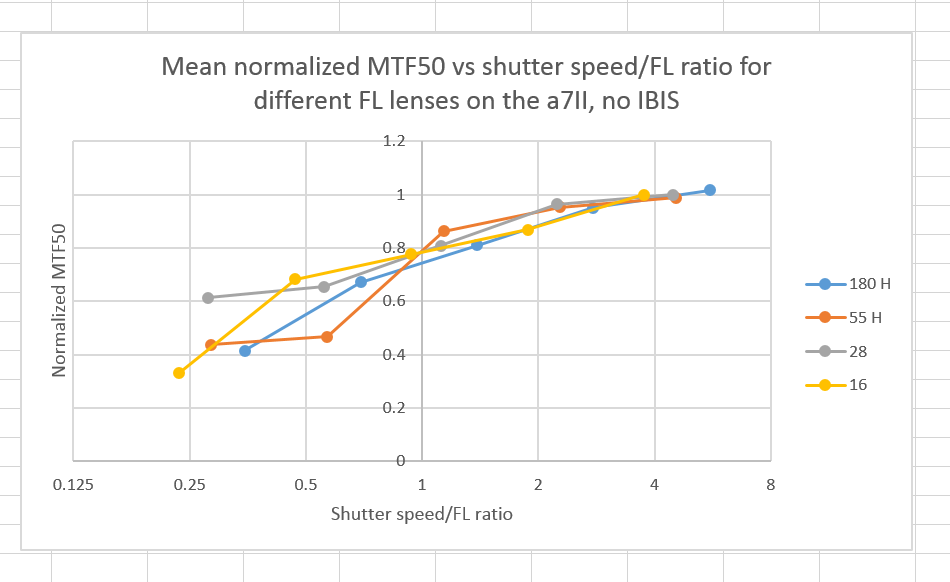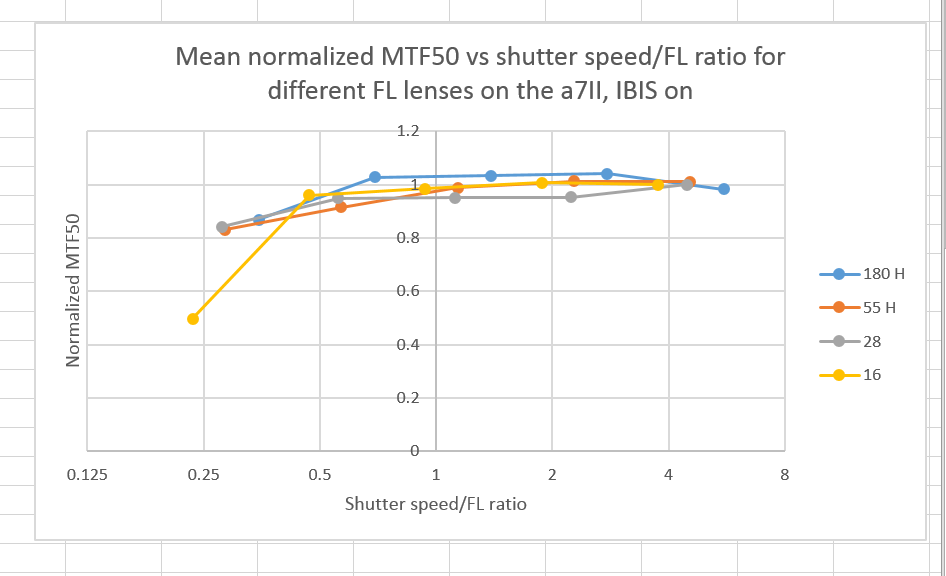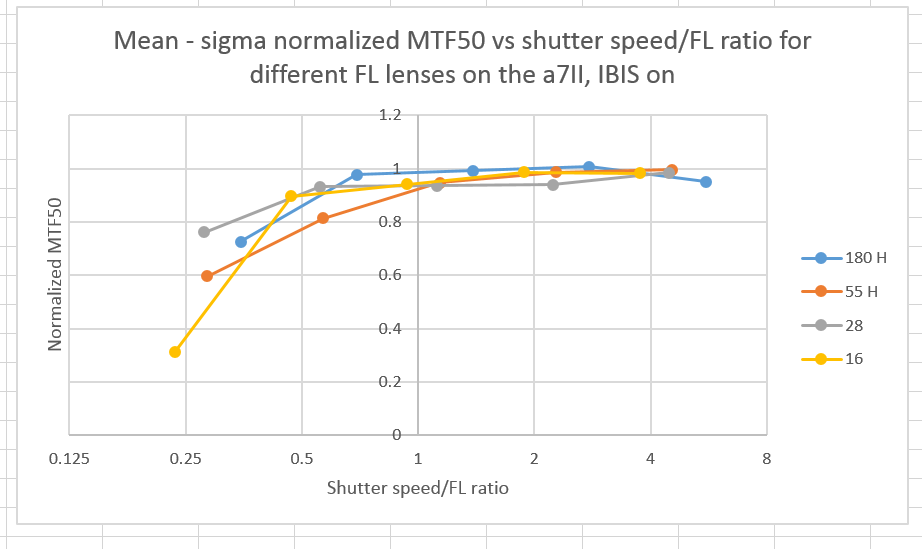When you first learned about photography, right along with the Sunny Sixteen rule, I’ll bet you learned this one:
When shooting hand held, set the shutter speed to at least as fast as one over the focal length of the lens.
That rule was originally promulgated for 35mm cameras. Should you scale the shutter speed when using different formats? That was always controversial. One school of thought said, yes, since angle of view was the important thing. Another said no, the reason you went to a larger format was to get sharper images, and if you scaled the shutter speed, you’d partially negate that.
I never bought the rule; I thought it was a recipe for blurred images, even with 35mm film.
People don’t believe me when I tell them this, but on page 116 of the 1980 edition of The Camera, Ansel Adams has this to say:
The choice of shutter speed must be made with consideration for the subject, whether moving or stationary, and also for the loss of image sharpness caused by slight camera movements during exposure. The general rule to observe is, when the camera is handheld, is to use as fast a shutter speed as you can, consistent with the requirements of exposure and depth of field. Tests I conducted some years ago, photographing distant leafless trees against the sky, indicated that, using a normal lens with a handheld camera, the slowest shutter speed that ensured maximum sharpness was 1/250 second. I found that even with firm body support image sharpness was noticeably degraded at 1/125 second. a speed that many photographers consider safe for handholding a camera with a normal lens. With a lens of longer than normal focal length, even shorter exposure times will be required.
I’ve done similar tests over the years. My target of choice was a newspaper taped to the garage door, which I find more demanding than tree branches, but my results were similar. I could get away with longer exposure times with leaf shutter rangefinder cameras like the Plaubel Makina or a twin lens reflex. SLRs with big mirrors like the Hasselblad made things harder. Focal plane RF cameras like the Leica M series were in the middle.
As film gave way to digital, and the detail-obscuring film gram dropped out of the picture, it became even harder to not experience subtle degradations of image sharpness when handholding.
Is it time for a new rule of thumb?
A while back, I tested 16, 28, 55, and 180 mm lenses handheld on a Sony alpha 7 Mark II (a7II), both with and without the in-body image stabilization (IBIS).
Here’s the protocol:
- The camera: the Sony a7II.
- The filter: Heliopan 77mm variable neutral density.
- The lighting: a single Fotodiox LED-200WA-56 daylight balanced flood.
- ISO set to allow AA rule shutter speed with f-stop set to mid value,
- Focusing in single shot AF mode with the medium focus area setting for Sony 55, manually at magnified view for other lenses.
- Drive set to single
- EFCS on
- Manual exposure mode.
- Hold the camera in the “Pete Souza” grip: left palm under base, left fingers bracing the underside of the front part of the lens, elbows against chest.
- Exposure protocol: ND filter to minimum attenuation,, shutter to AA rule, make 16 exposures with new focusing for each, ND filter down a stop, make 16 exposures… until you get to five stops down from where you started.
- Inhale, exhale, brace, think calm thoughts, squeeze the shutter release, remembering to “pull through”.
- Develop in Lightroom 5.7.1 with standard settings.
- Crop, export as TIFFs, analyze for horizontal edge and vertical edge MTF50 in Imatest.
- Export the results to Excel, crunch the stats, and graph.
I realized that, from the above tests, I had the data to get a handle on what might be a new formulation of the old rule. I normalized the shutter speeds to the focal length of the lenses, and normalized the MTF50 numbers, which were my proxy for sharpness, to those at the fastest shutter speeds.
Here’s what I got for average sharpness, with IBIS turned off and EFCS turned on:
The points on the right represent Adams’ recommendation, which amounts to 5 on the horizontal axis. The vertical axis is at one, which is the rule that I quoted at the beginning of this post. You can see that the traditional rule produces a substantial, but not egregious, loss in sharpness.
With IBIS on, things are different:
Now, not only does the traditional rule produce excellent results, but even exposures twice that long are good.
What if we want more confidence that our handheld exposures will be sharp. I plotted the mean minus the standard deviation to get a handle on that. If the blurriness statistics are Gaussian, about one sixth of the exposures will be worse than that line, and 5/6 will be better.
Now it seems like the choice is between Adams’ rule and twice that exposure, depending on how much degradation is tolerable. The traditional 1/FL rule produces a big loss in the 16th percentile image.
With IBIS on:
Twice the exposure of the 1/FL rule still seems pretty safe, and 1/FL is solid.
As always with handheld photography, there is a great deal of variation in sharpness from exposure to exposure. There is also a variation among photographers, and for the same photographer in various positions. I recommend that you do your own testing.




Jim, once again, another really interesting, useful test! How do the fastest, best handheld, non-IBIS numbers compare to a camera on a tripod, just for control purposes?
Have you also seen the Joe McNally “Da Grip”? Last picture in this blog post: http://blog.joemcnally.com/2008/03/10/da-grip/
WRT da grip: I never would have thought of that! Wonder why he doesn’t show the Pete Turner grip…
“How do the fastest, best handheld, non-IBIS numbers compare to a camera on a tripod, just for control purposes?”
Compare these curves: http://blog.kasson.com/?p=8358
with these: http://blog.kasson.com/?p=8391
Jim
Thanks. So a tripod is a bit better by perhaps around 10% at most?
About that.
I am confused but sometimes I have difficulty following things.
Sony says IBIS is worth 5 Stops. If the rule of thumb is 1 for 1 or even double the shutter speed for the aperture as I think you are saying? I assume this is without IBIS and to me at least makes perfect sense.
But with IBIS I have to think that shutter speed minimum would drop? Perhaps you cannot drop the shutter speed by 5 steps i.e. 50mm lens 15th of second or even doubling it as you suggest with IBIS on 100th of a second less 5-stops or 1/30th.
Can you clarify because I cannot tell whether you are saying IBIS has not effect or you are not talking about what is a good rule of thumb like you did without IBIS.
In my own mind I would have to think a person would be as safe at 50th on a 50mm lens or the old standard as you are recommending which is 2x or 100th. If this is correct we can feel pretty comfortable using the old rule with IBIS or much more so than without? Can you set me straight sir!
AA’s rule of thumb was 1/(5*focal length), not 1/FL. I think 5 stops is optimistic. Think 3 or so. Then the rule of thumb becomes 1/(FL*0.5). That’s a good place to start, for critical situations. In non-critical ones, you might be able to get away with 1/(FL*0.125), but you might not.
Excuse my ignorance but as not native English speaker I find quite hard to follow and duly understand .. I who’s you add more example to make it easy to understand
can make a conclusion telling exactly what you advice in using IBIS or not beacuse I’m not quite happy with the result I get with my 100-400 GM and A7r iv .. even at SS of 1/1000 and OSS on .. but when the camera in tripod it’s much better,
Is it better to turn off OSS for stationary subjects like small birds with that lens at 400mm and SS 1/1000 and above ? Thanks
If it’s a lot better with the camera on a tripod, I would recommend leaving stabilization on. At 1/1000, you should be using EFCS for the handheld shots
Ansel Adams would have been talking about the Hasselblad leaf shutter, which does not stop movement the same way as a focal plane shutter….
OTOH, the V-series ‘blads had pretty terrible mirror slap. I used the prerelease feature on a tripod, but not handheld.